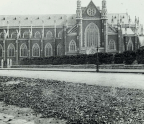Reconstructing the past
One of the great challenges of writing history – whether creatively or academically – is dealing with the inherent biases and gaps in the records. Inevitably, historical records tend to favour the record keepers – the literate, the wealthy and the powerful. Those who do not leave written records – the poor or uneducated, the oppressed and marginalised, and those from non-literate cultures – find themselves either misrepresented or missing from the historical record. Worse still, this misrepresentation and omission in the primary literature perpetuates and expands itself over time in the secondary accounts.

So, how can we, we asked contributors to develop innovative and creative ways to re-examine Australia’s early coastal contact history to provide a better understanding of how Indigenous Australians reacted to, and experienced, contact from overseas.
You’re reading a preview, subscribe to read more.
Start your free 30 days



